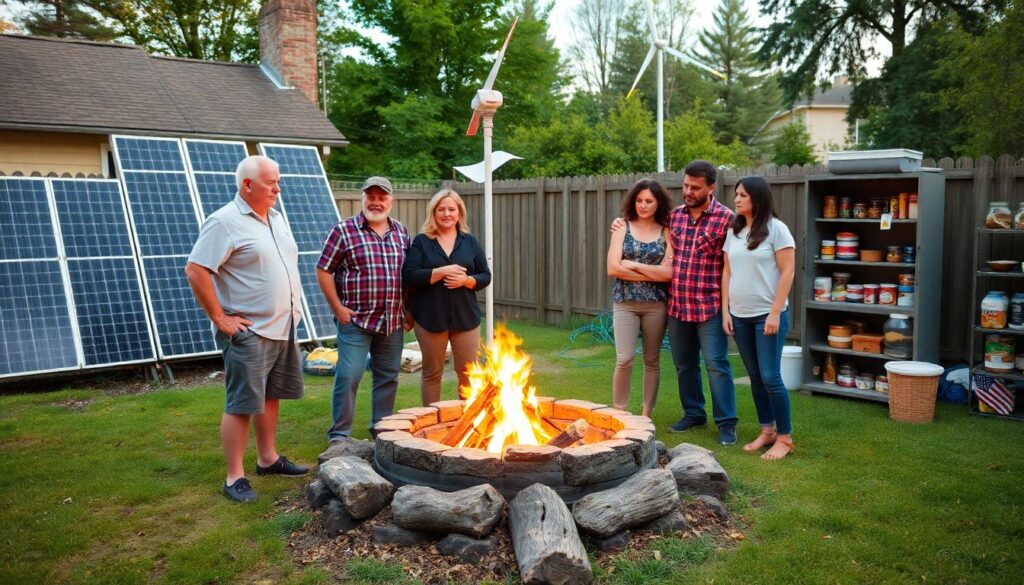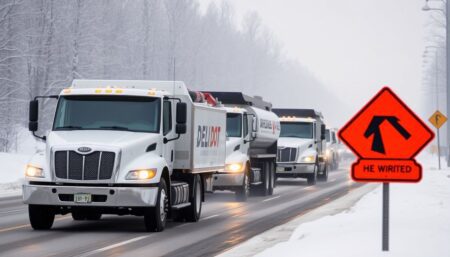Have you ever wondered what would happen if, in an instant, every electronic device around you stopped working? What if the lights went out, not just in your home, but across entire cities and countries? This isn’t a scene from a post-apocalyptic movie, but a very real threat known as an Electromagnetic Pulse (EMP). An EMP can be naturally occurring, like a solar flare, or man-made, such as a high-altitude nuclear explosion. The result? A grid-down scenario that could leave us stranded in the dark ages, at least temporarily.
But what if you could be prepared? What if you could ensure your family’s safety, maintain essential services, and even preserve some semblance of modern comforts in the face of such a catastrophe? Welcome to ‘The Ultimate EMP Survival Guide: Preparing for a Grid-Down Scenario’. We agree that the thought of an EMP event is daunting, but we promise that by the end of this guide, you’ll have a comprehensive understanding of EMP preparedness and a clear roadmap to grid-down survival.
So, let’s start with the basics. An EMP is a short burst of electromagnetic energy that can induce high voltages in electrical conductors, potentially damaging or destroying electronic devices. According to a report by the Commission to Assess the Threat to the United States from Electromagnetic Pulse (EMP) Attack, a well-designed EMP attack could have ‘catastrophic’ consequences, leaving up to 90% of the U.S. population without electricity for months or even years. The question is, will you be among those caught off guard, or will you be the one ready to face the challenge head-on?
In this guide, we’ll delve into the science behind EMPs, explore real-life examples, and discuss the potential impacts on various aspects of our daily lives. We’ll also provide practical tips on how to protect your electronics, stockpile essential supplies, and develop skills that will be invaluable in a grid-down scenario. Whether you’re a seasoned prepper or just starting your journey into self-reliance, this guide is designed to equip you with the knowledge and tools necessary to face an EMP event with confidence.
So, buckle up as we embark on this informative and potentially life-saving journey. By the end of this guide, you’ll not only understand the threat of EMPs but also be well on your way to becoming an EMP preparedness expert. Let’s dive in!
Mastering EMP Preparedness for Grid-Down Survival
In the dynamic landscape of modern life, the specter of an Electromagnetic Pulse (EMP) event, whether natural or man-made, looms as a potential disruptor of our interconnected world. An EMP, with its powerful surge of electromagnetic radiation, can render our reliance on technology obsolete, plunging us into a grid-down scenario that demands resilience and adaptability. Mastering EMP preparedness is not just about stockpiling supplies, but about cultivating a mindset that embraces self-sufficiency and ingenuity. It’s about understanding the intricacies of our technological dependencies and learning to navigate a world without them. From protecting sensitive electronics to harnessing alternative energy sources, from preserving food without refrigeration to maintaining communication methods beyond cell phones, the journey towards EMP preparedness is a fascinating exploration of human adaptability. It’s about reclaiming lost skills, embracing simplicity, and remembering that while technology can enhance our lives, it’s our ingenuity and resilience that truly define us. So, let’s embark on this adventure, not with fear, but with curiosity and a spirit of discovery, because in the face of potential grid-down scenarios, we are not just preparing for survival, we are preparing for a new way of life.
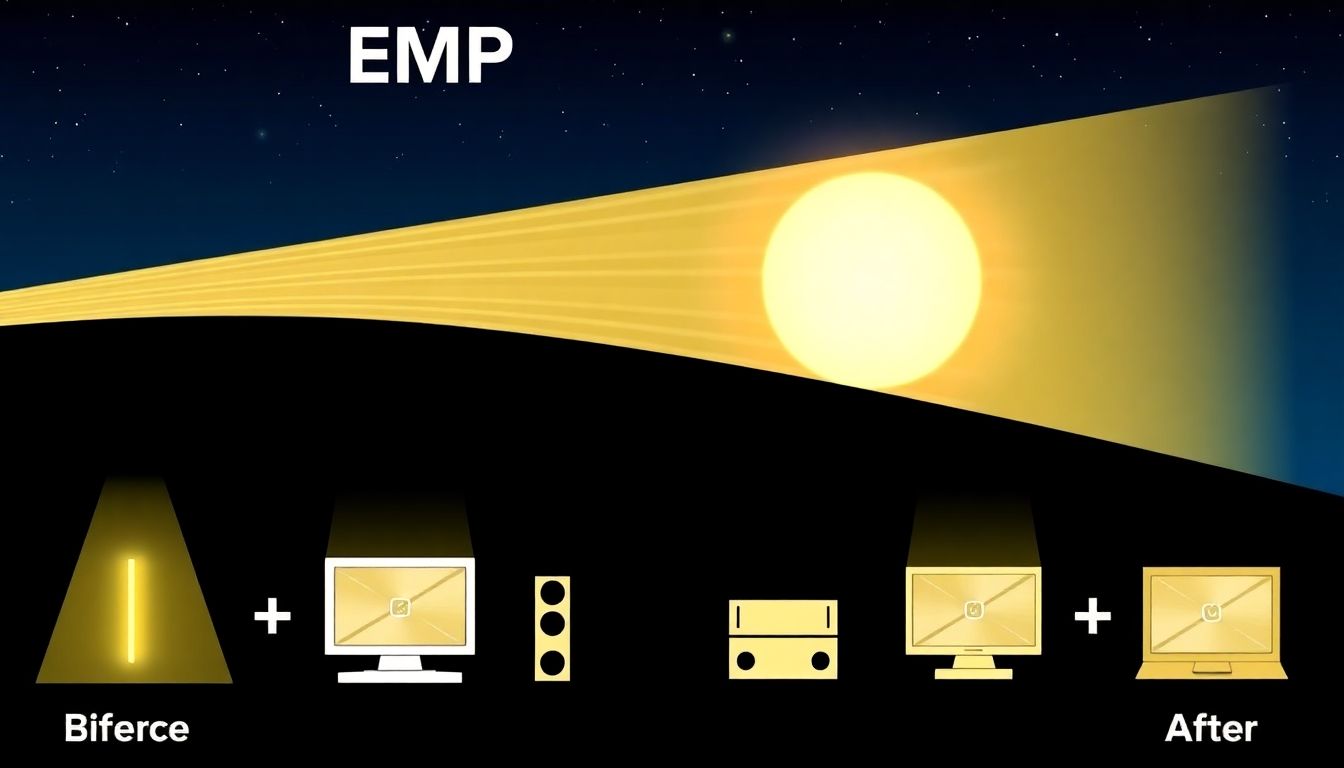
Understanding Electromagnetic Pulses
Imagine you’re in a vast, dark room, and you have a single, fragile light bulb connected to a long, delicate string. This light bulb represents our modern, electronic-dependent society. Now, picture a powerful, invisible force, like a giant, unseen hand, suddenly clapping its palms together in the middle of the room. This force is an Electromagnetic Pulse (EMP), a burst of electromagnetic radiation that can induce a powerful current in any wire it encounters.
EMPs can be caused by various phenomena. The most common is a nuclear explosion high in the atmosphere. When a nuclear bomb detonates, it releases a tremendous amount of energy, ionizing the air and creating a powerful electromagnetic field. This field, in turn, induces a current in any wire it comes into contact with, which can overload and damage electronic circuits. Another cause can be a powerful solar flare, a massive release of energy from the sun, which can generate a similar effect on Earth’s magnetic field.
Now, let’s return to our light bulb. When the invisible hand claps, the sudden surge of current could overload the light bulb’s circuit, causing it to explode. This is a simple analogy for what an EMP can do to our modern society. Our ‘light bulb’ is the vast network of electronics that we rely on daily
- from smartphones and computers to cars, hospitals, and power grids. An EMP could overload and damage these systems, causing widespread blackouts and disrupting critical infrastructure. In essence, an EMP has the potential to send us back to the dark ages, at least temporarily.
To understand the potential impact, consider the following points:
- Widespread Power Outages: EMPs can knock out power grids, leaving millions without electricity for an extended period.
- Damage to Electronics: The sudden surge of current can damage or destroy electronic devices, from simple household appliances to complex medical equipment.
- Disruption of Communication: EMPs can disrupt or disable communication systems, making it difficult for emergency services to respond and for people to stay informed.
- Economic Impact: The damage to infrastructure and electronics could lead to significant economic losses.
In conclusion, understanding EMPs is crucial for appreciating the vulnerabilities of our modern, electronic-dependent society and the need for robust protective measures.
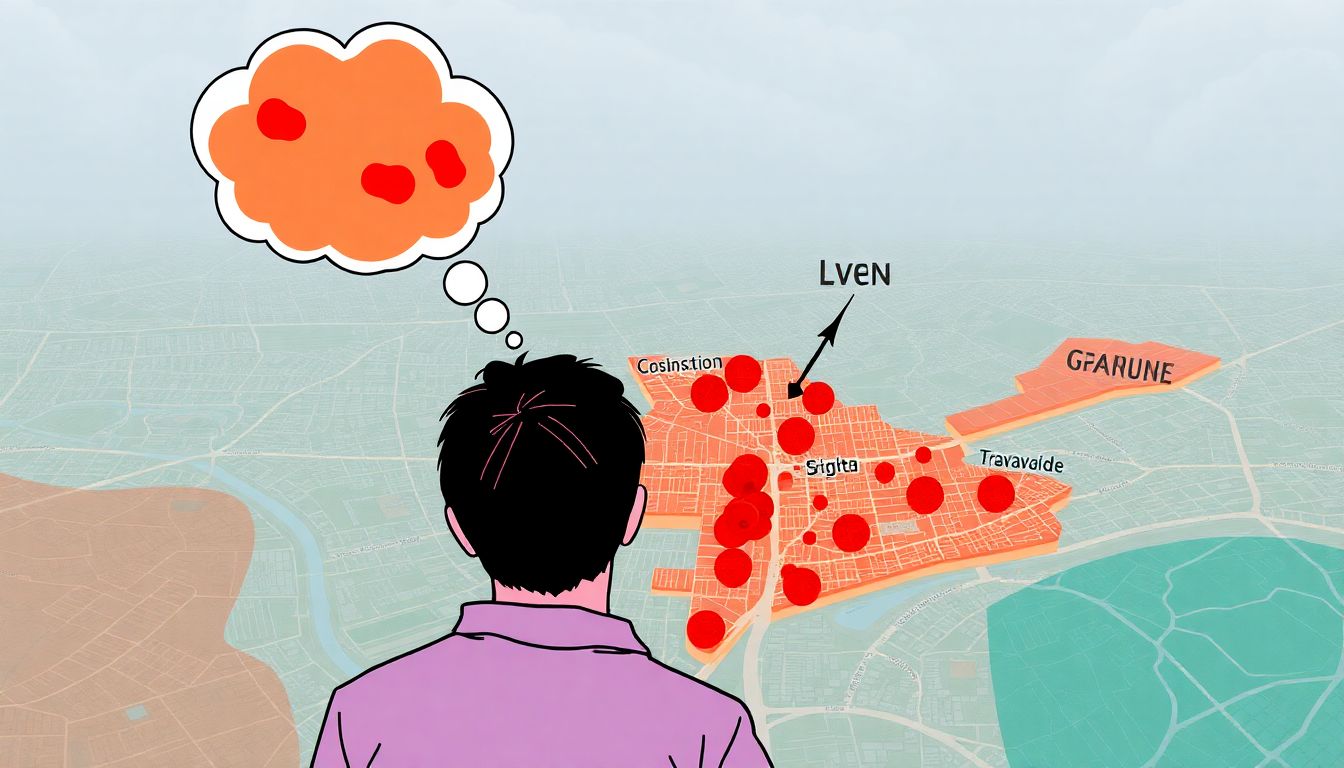
Assessing Your Vulnerability
Imagine, if you will, a sudden, silent explosion high above the Earth’s surface. This is no ordinary blast, but an Electromagnetic Pulse (EMP) event, capable of knocking out electronics and disrupting our modern, tech-reliant lives. Assessing your personal vulnerability to such an event is not about inducing fear, but rather empowering you with knowledge to prepare and adapt. Let’s embark on this thought experiment together.
Firstly, consider your location. Are you nestled in a bustling city, or do you reside in a rural area? Urban dwellers might face more immediate challenges due to higher population density and greater reliance on infrastructure. However, rural residents may have less access to emergency services and supplies. Think about your proximity to potential EMP sources, too. While the likelihood of a natural EMP event is low, it’s wise to be aware of your surroundings.
Next, evaluate your job or primary source of income. Those in tech-related fields or jobs that heavily rely on electricity and communication networks might face more significant disruptions. On the other hand, essential services like healthcare, agriculture, and emergency response could see increased demand. Consider how an EMP event might impact your ability to work and earn a living.
Lastly, examine your reliance on technology. From smartphones to smart homes, we’re more connected than ever. An EMP event could render these devices useless, affecting everything from communication to cooking and heating. Ask yourself: How many of your daily tasks rely on technology? How would you adapt if these tools were suddenly unavailable?
To assess your vulnerability, consider the following steps:
- Identify your location and its potential risks.
- Evaluate your job and its potential impact on your income.
- Assess your reliance on technology and brainstorm alternative methods.
Remember, the goal is not to induce panic, but to foster resilience. By understanding and acknowledging your vulnerabilities, you’re taking the first step towards preparedness. After all, knowledge is power, and in the face of an EMP event, it could be the power to adapt and endure.
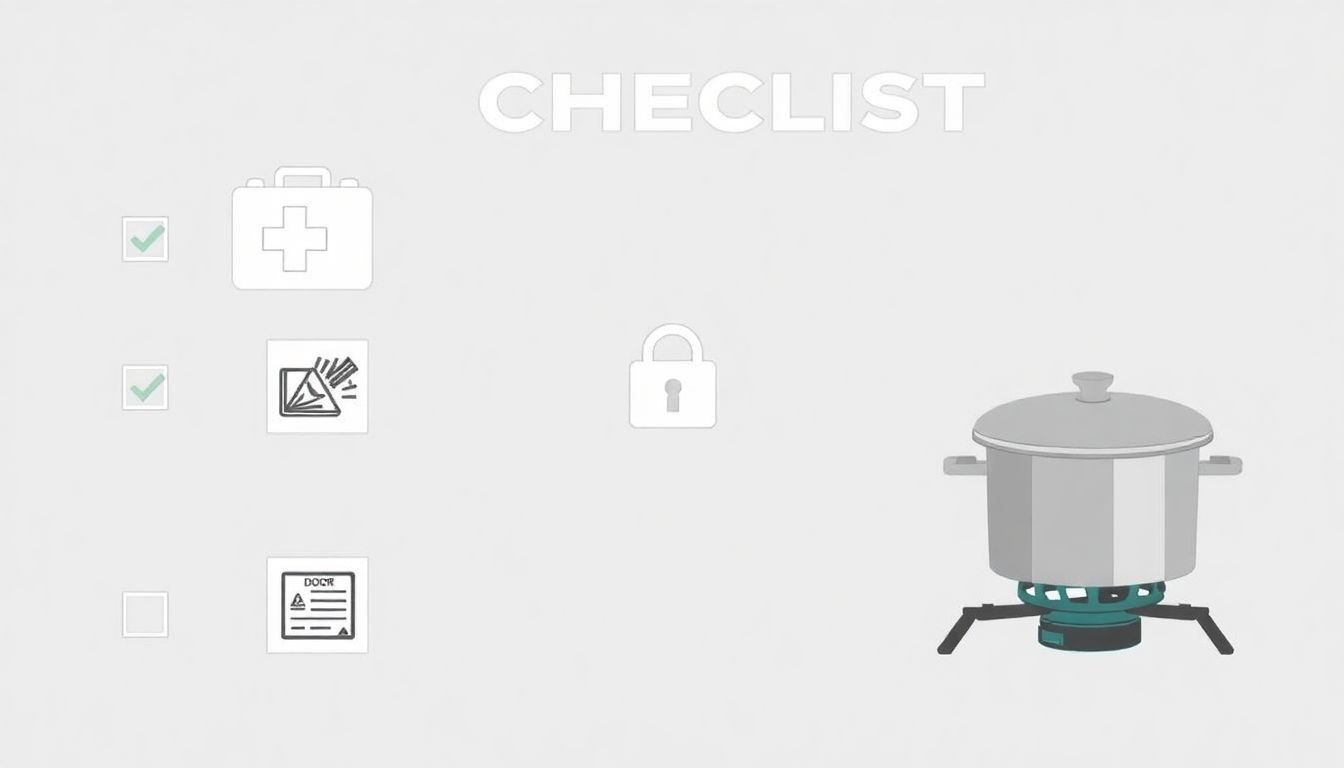
The First 24 Hours: Immediate Steps
When the first 24 hours after an Electromagnetic Pulse (EMP) event arrive, it’s crucial to act swiftly and smartly. An EMP can disable electronics, so your primary focus should be on immediate safety, preserving food, and securing your home. Here’s a step-by-step guide to help you navigate this challenging situation.
Immediate Safety Measures:
Stay Calm and Stay Put:
- Panic is your enemy. Take a few deep breaths and assess your situation. If you’re indoors, stay there. If you’re outdoors, find the nearest sturdy shelter.
Check for Injuries:
- Ensure you and your companions are unharmed. If anyone is injured, provide first aid if you can, but prioritize safety. Do not attempt to move seriously injured individuals unless absolutely necessary.
Avoid Downed Power Lines:
- They may still be live and dangerous. Stay at least 30 feet away from them.
Stay Away from Windows:
Glass can shatter due to the EMP’s shockwave, posing a hazard.
Preserving Food:
Secure Perishable Food:
- If the power is out, perishable food will spoil quickly. If you have a generator, use it sparingly to keep your refrigerator running. Otherwise, move perishable food to a cool, shaded area outdoors.
Use Ice:
If you have ice or ice packs, wrap them in a towel and place them around perishable food to keep it cool.
Securing Your Home:
Barricade Doors and Windows:
- Use furniture to block entry points. If you have boards or plywood, use them to cover windows.
Secure Valuables:
- Lock up important documents, jewelry, and other valuables. If possible, move them to a secure location like a safe or a hidden spot.
Protect Your Water Supply:
If you have a well, secure it to prevent contamination. If you’re on city water, fill containers with water for drinking and sanitation purposes.
Additional Steps:
Stay Informed:
- If you have a battery-powered or hand-crank radio, tune in to local news for updates and instructions.
Conserve Resources:
- Turn off lights, unplug electronics, and conserve water to make your supplies last longer.
Prepare for the Next Steps:
Gather supplies like non-perishable food, water, first aid kits, medications, and tools. You’ll need these for the following days and weeks. Remember, every situation is unique, so adapt these steps to your specific circumstances. Stay calm, stay smart, and stay safe.
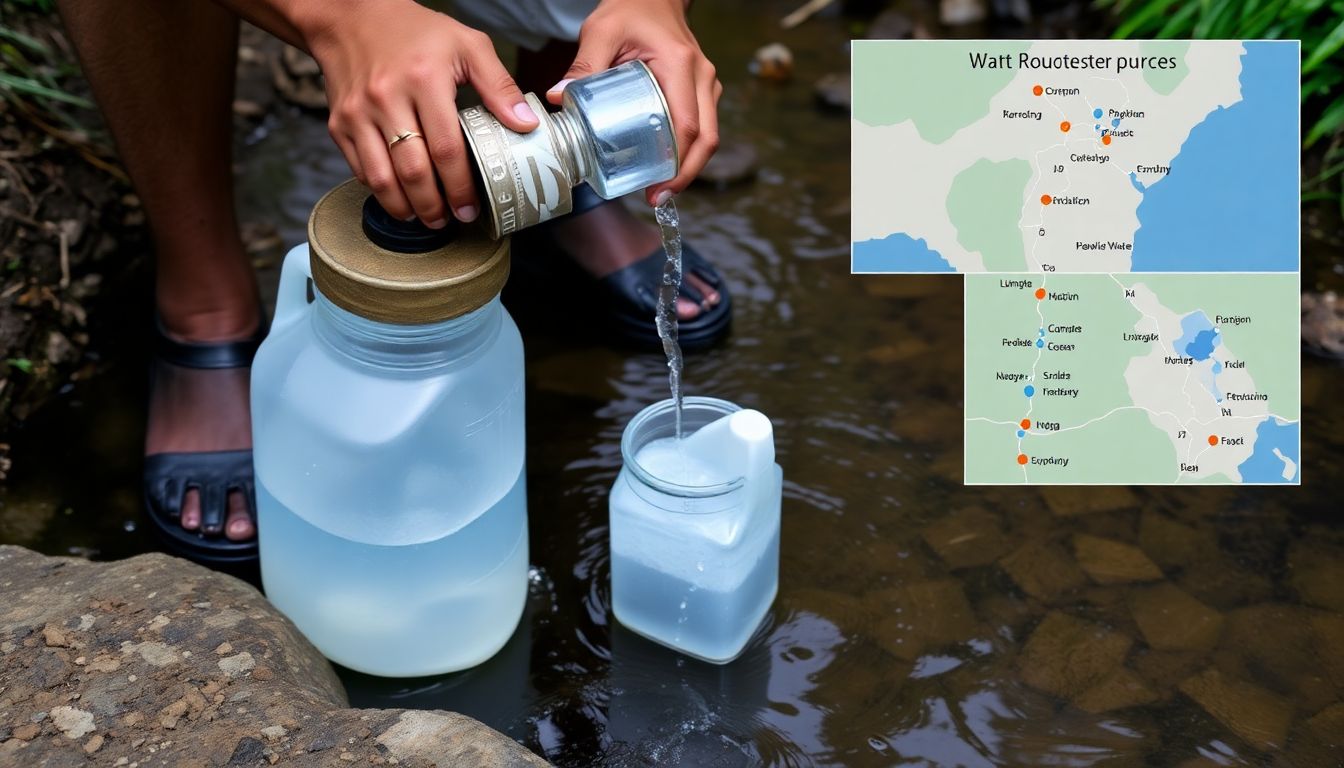
Water: The Essence of Life
In the grand tapestry of life, no thread is more vital than water. This humble yet indispensable element is not just the essence of life, but also the lifeline in grid-down scenarios, where access to clean water becomes a top priority. When the lights go out, and the taps run dry, understanding how to collect, purify, and store water can mean the difference between thriving and merely surviving.
Water is the body’s primary component, making up about 60% of our mass. It facilitates every biological process, from transporting nutrients to regulating temperature. In a grid-down scenario, access to clean water is not just a comfort, but a necessity. Dehydration can set in quickly, leading to fatigue, headaches, and even life-threatening conditions like heatstroke.
So, how does one ensure a steady supply of clean water in a grid-down situation? The first step is to identify potential water sources. Rainwater, rivers, streams, lakes, and even snowmelt can be valuable water sources. However, it’s crucial to remember that not all water sources are created equal. Surface water, for instance, can harbor harmful pathogens, making it essential to purify before consumption.
Purification methods vary, each with its own set of pros and cons. Boiling is a tried-and-true method that kills bacteria, viruses, and parasites. However, it requires a heat source and can be time-consuming. Filtration, on the other hand, removes impurities but may not kill all pathogens. Chemical treatments like iodine or chlorine can kill bacteria but may not be effective against viruses or parasites. UV light purification is effective against all pathogens but requires a power source.
Storing water is another critical aspect. It’s recommended to store at least one gallon of water per person per day. Containers should be clean, food-grade, and able to hold at least five gallons. Rotate your water supply every six months to ensure freshness.
In conclusion, water is not just a necessity; it’s a lifeline in a grid-down scenario. Understanding how to collect, purify, and store water can greatly enhance one’s chances of survival. So, the next time you turn on the tap, remember the value of this precious resource and consider how you might secure it in a world without electricity.
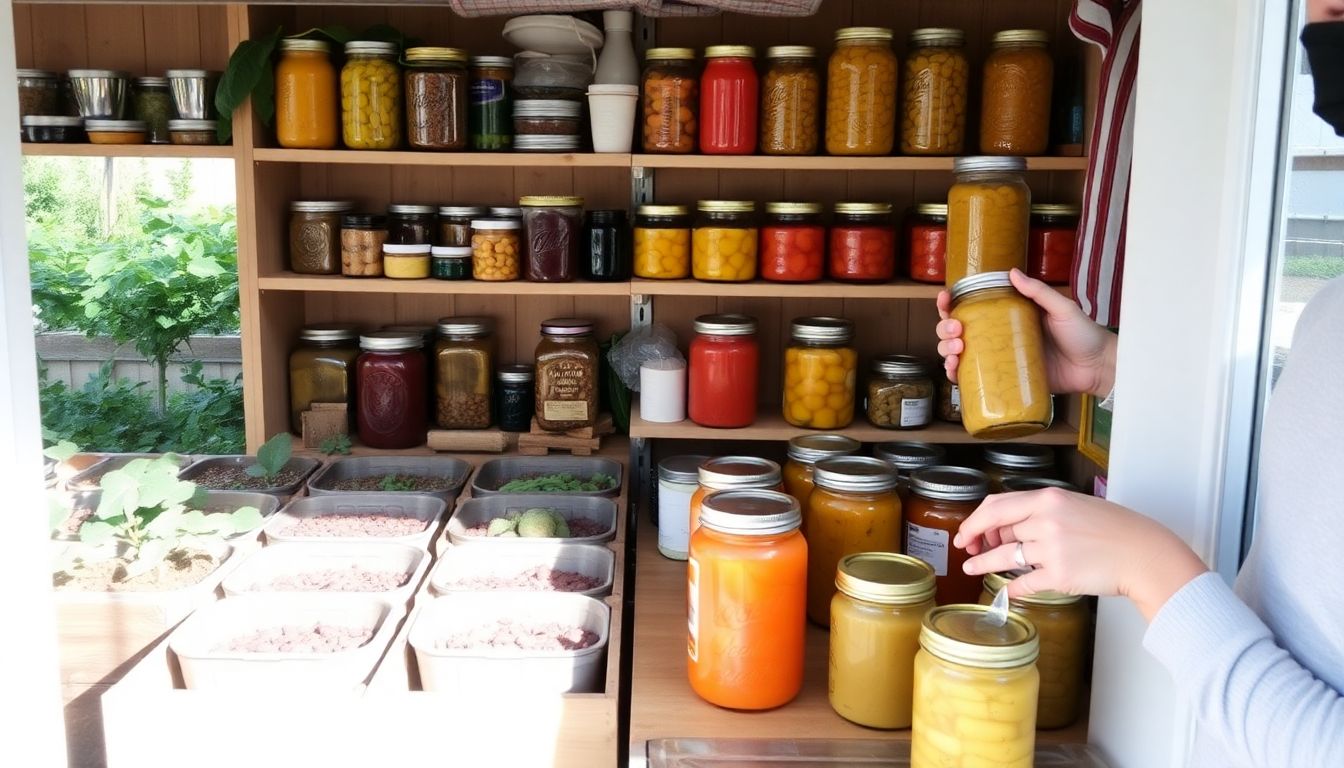
Food: Planning and Preservation
Food planning and preservation are essential skills for ensuring a steady and sustainable food supply. Let’s delve into the fascinating world of food storage, preservation methods, and gardening techniques that can help you maintain a diverse and nutritious diet, regardless of the season.
Firstly, understanding the shelf life of essential foods is crucial. Here’s a list of some key foods and their approximate shelf lives at room temperature:
- Rice and pasta: 2-3 years
- Dried beans and lentils: 1-3 years
- Sugar: 2-3 years
- Honey: indefinite
- Salt: indefinite
- Powdered milk: 10-20 years
- White rice: 25-30 years
Now, let’s explore some preservation methods to extend the life of your food.
1. Canning: This involves heating food in sealed jars to kill bacteria and create a vacuum, preventing spoilage. It’s perfect for preserving fruits, vegetables, meats, and even jams and pickles.
2. Freezing: Freezing food at 0°F (-18°C) stops bacterial growth and enzyme activity, preserving food for up to a year or more.
3. Drying: Dehydrating food removes moisture, preventing bacterial growth. This method is great for preserving fruits, vegetables, and meats.
4. Fermentation: This ancient method uses beneficial bacteria to preserve food and enhance its nutritional value. Examples include sauerkraut, kimchi, and kombucha.
Gardening is another vital aspect of ensuring a steady food supply. Here are some techniques to consider:
- Intercropping: Planting different crops together can help deter pests, improve soil health, and maximize space.
- Succession planting: Planting a series of crops in the same space throughout the growing season to make the most of your garden’s productivity.
- Crop rotation: Moving crops from one part of the garden to another each year to prevent soil depletion and disease.
- Companion planting: Planting crops together that benefit each other, such as tomatoes and basil.
By incorporating these techniques into your food planning and preservation strategy, you’ll be well on your way to enjoying a diverse and sustainable food supply, all year round.
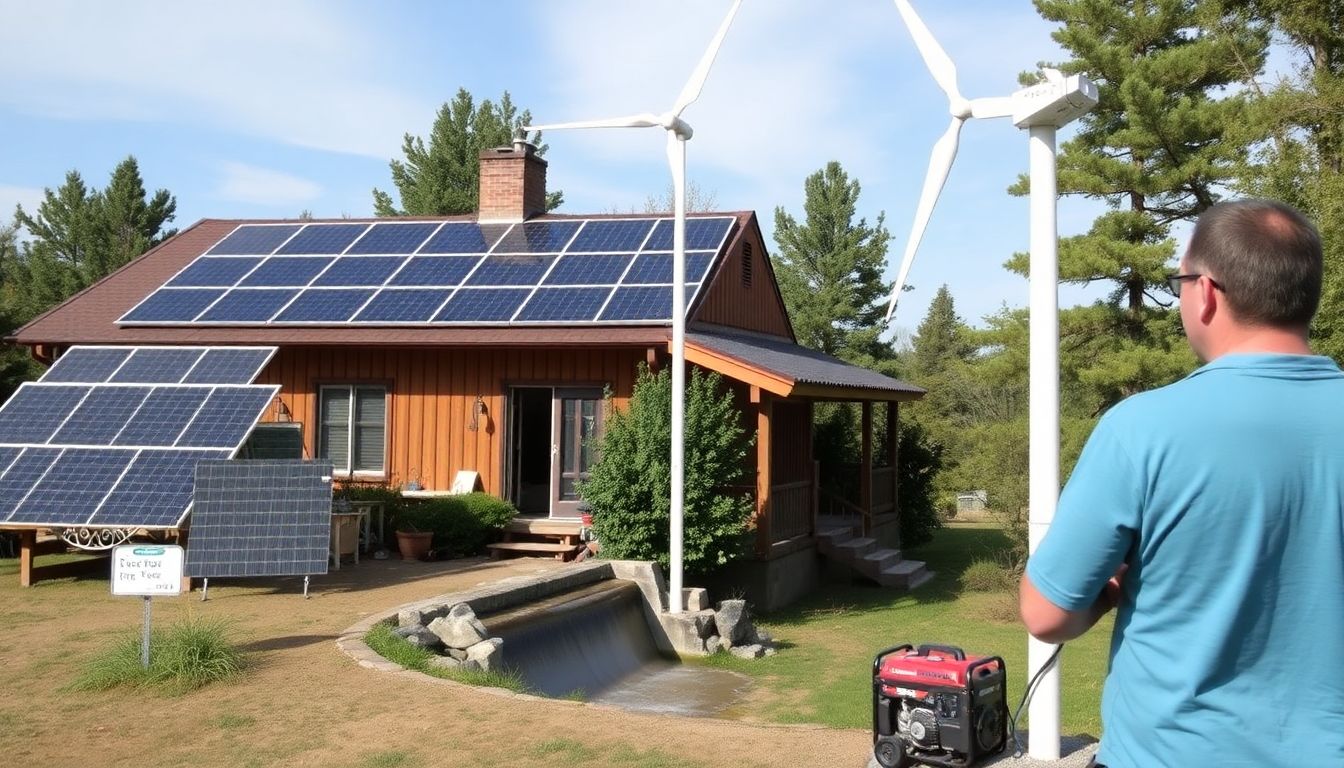
Off-Grid Power: Alternative Energy Sources
Embarking on a journey towards energy independence often leads us to explore the fascinating world of off-grid power sources. These alternatives to traditional power grids harness the boundless energy of our environment, offering a sustainable and self-reliant path. Let’s delve into some of the most popular off-grid power sources, their advantages, disadvantages, and maintenance requirements.
Solar Power is a crowd favorite, thanks to its clean and abundant nature. Solar panels convert sunlight into electricity, making them an ideal choice for remote locations with ample sunshine. They require minimal maintenance, with occasional cleaning to remove dust and debris. However, their upfront cost can be high, and they rely on sunlight, making them less efficient in cloudy conditions or at night.
Wind Power is another popular option, utilizing the kinetic energy of wind to generate electricity. Wind turbines can be quite efficient, especially in areas with consistent wind speeds. They require minimal fuel and have low operational costs. However, they can be noisy, visually intrusive, and may pose a risk to local wildlife. Additionally, their efficiency can be affected by changing wind conditions.
Hydro Power harnesses the energy from moving water, such as rivers or streams. It’s a reliable source, as water flow is consistent, and it has a high power output. However, it requires a significant water source and can have environmental impacts, such as disrupting local ecosystems. It also requires regular maintenance to prevent sediment buildup and ensure optimal performance.
Generators can run on various fuels like diesel, propane, or natural gas, providing a reliable power source. They can be used in combination with other off-grid power sources for a hybrid system. However, they require regular fuel refills, produce emissions, and can be noisy. Their maintenance includes regular oil changes and filter replacements.
Energy Storage is a crucial aspect of off-grid power systems. Batteries store excess energy produced by renewable sources for use when production is low. They require regular maintenance, including equalizing charges to prevent damage from deep discharges. Their lifespan and performance can be affected by factors like temperature and depth of discharge.
Each of these off-grid power sources has its unique characteristics, making them suitable for different situations. The best choice often depends on factors such as location, energy needs, and budget. By understanding these alternatives, we can take a step towards a more sustainable and self-reliant future.
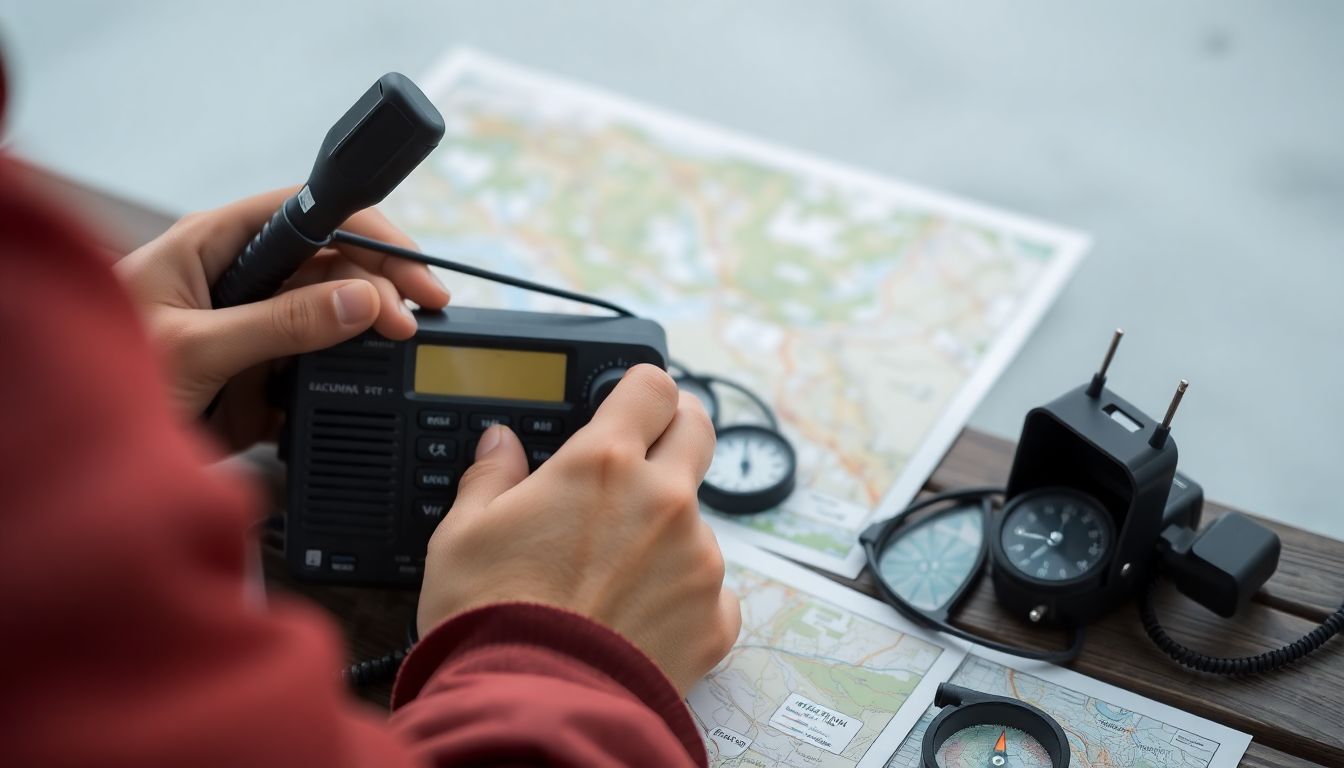
Communication and Navigation
In a grid-down scenario, where modern infrastructure and technology fail, communication and navigation become not just convenient, but crucial for survival. These skills enable us to stay connected with others, find resources, and navigate safely to our destinations. Let’s delve into the importance of these skills and explore some alternative methods and tools. Communication is the lifeline that keeps communities together, especially in times of crisis. It allows us to share vital information, coordinate efforts, and provide emotional support. In a grid-down scenario, traditional communication methods like cell phones and the internet may be unavailable. This is where alternative communication methods like ham radios and CB radios come into play. Ham radios, also known as amateur radios, operate on a wide range of frequencies and can transmit voice, data, and images. They are not dependent on commercial infrastructure and can be used for long-distance communication. Ham radio operators often have extensive knowledge of emergency communication protocols and can provide valuable assistance in disaster situations. CB radios, on the other hand, are typically used for short to medium-range communication. They are easy to use and can be a lifesaver in local emergencies.
Navigation is equally important in a grid-down scenario. Without GPS, we need to rely on traditional navigation tools to find our way. Maps and compasses are essential for this. A good map can help us plan our route and avoid hazards. It’s important to have maps of the local area as well as larger-scale maps for long-distance travel. A compass helps us determine our direction of travel. It’s a simple tool, but it can be a game-changer in the wilderness. Other navigation tools include altimeters for climbing and descending, and even the sun can be used as a navigational aid. In the Northern Hemisphere, the sun rises in the east and sets in the west. At midday, it’s due south. In the Southern Hemisphere, it’s the opposite. Learning to use these tools effectively can mean the difference between finding your way and being lost. In conclusion, communication and navigation are vital skills in a grid-down scenario. They allow us to stay connected, find our way, and ultimately, survive. It’s important to learn these skills and have the necessary tools before an emergency situation arises. After all, preparation is the best form of insurance in uncertain times.

Medical Preparedness: First Aid and Beyond
Medical preparedness is not just about having a well-stocked first aid kit; it’s about knowing how to use its contents effectively. A comprehensive first aid guide is your first line of defense in case of emergencies, empowering you to act swiftly and confidently until professional medical help arrives. Let’s delve into the world of first aid, starting with the essential medical supplies every household should have.
The heart of medical preparedness lies in a well-equipped first aid kit. Here’s a list of essentials to include:
- Adhesive bandages in various sizes
- Gauze pads and rolls
- Adhesive tape
- Antiseptic wipes or solution
- Pain relievers (ibuprofen, acetaminophen)
- Antihistamines
- Tweezers and scissors
- Thermometer
- Instant cold packs
- Emergency blanket
- First aid manual
Knowing how to treat common injuries and illnesses is equally important. Let’s explore some key aspects:
Treating Wounds:
Clean the wound with soap and water or an antiseptic solution. Apply pressure with a sterile bandage to stop bleeding. For deep wounds, seek immediate medical attention.
Burns:
Cool the burn with cold water for 10-15 minutes. Do not apply ice, butter, or any grease. Cover the burn with a sterile, non-adhesive bandage or clean cloth.
Sprains and Strains:
- Follow the RICE method
- Rest, Ice, Compression, and Elevation. Seek medical help if pain worsens or swelling increases.
Poisoning:
Call the poison control center immediately. Do not induce vomiting unless instructed to do so.
Knowledge and training are the cornerstones of medical preparedness. First aid courses equip you with the skills and confidence to handle emergencies. Regularly update your first aid kit and refresh your knowledge to ensure you’re always prepared. After all, in an emergency, every second counts, and your preparedness could make all the difference.

Security and Self-Defense
In the event of a grid-down scenario, where societal infrastructure collapses, the importance of security and self-defense cannot be overstated. This isn’t about paranoia, but rather, being prepared for potential threats and ensuring the safety of you and your loved ones. Your home becomes your fortress, and your supplies, your lifeline. Let’s break down how to secure your home, protect your supplies, and defend yourself, should the need arise.
Firstly, securing your home is paramount. This involves creating barriers to entry, such as installing sturdy doors, reinforcing windows, and even creating physical obstacles like fences or hedges. Lighting is also crucial. Motion-activated lights can deter potential intruders, while keeping your home well-lit during power outages can help you navigate safely.
Protecting your supplies is equally important. Store them in a secure location within your home, preferably not in plain sight. Consider using locks or safes for valuable items. Remember, in a grid-down scenario, resources may be scarce, making your supplies a target.
Defending yourself is the last resort, but it’s essential to be prepared. This doesn’t mean you need to become a survivalist warrior overnight. It’s about understanding your surroundings, being aware of potential threats, and knowing how to de-escalate situations. Situational awareness is key. Know who’s around you, what they’re doing, and how their actions might affect you. This could mean anything from noticing a suspicious vehicle driving by to being aware of someone following you.
De-escalation is a crucial skill. It’s about avoiding conflict, not provoking it. If you sense danger, remove yourself from the situation if possible. If not, stay calm, make yourself seem non-threatening, and try to talk your way out. Remember, your goal is to leave the situation unharmed, not to ‘win’ a fight.
Lastly, consider learning basic self-defense techniques. There are many resources available, from online tutorials to local classes. The goal isn’t to become a fighter, but to have the confidence and skills to defend yourself if necessary.
In conclusion, security and self-defense in a grid-down scenario are about being prepared, not paranoid. It’s about securing your home, protecting your supplies, and knowing how to defend yourself if necessary. But above all, it’s about staying aware and staying safe.
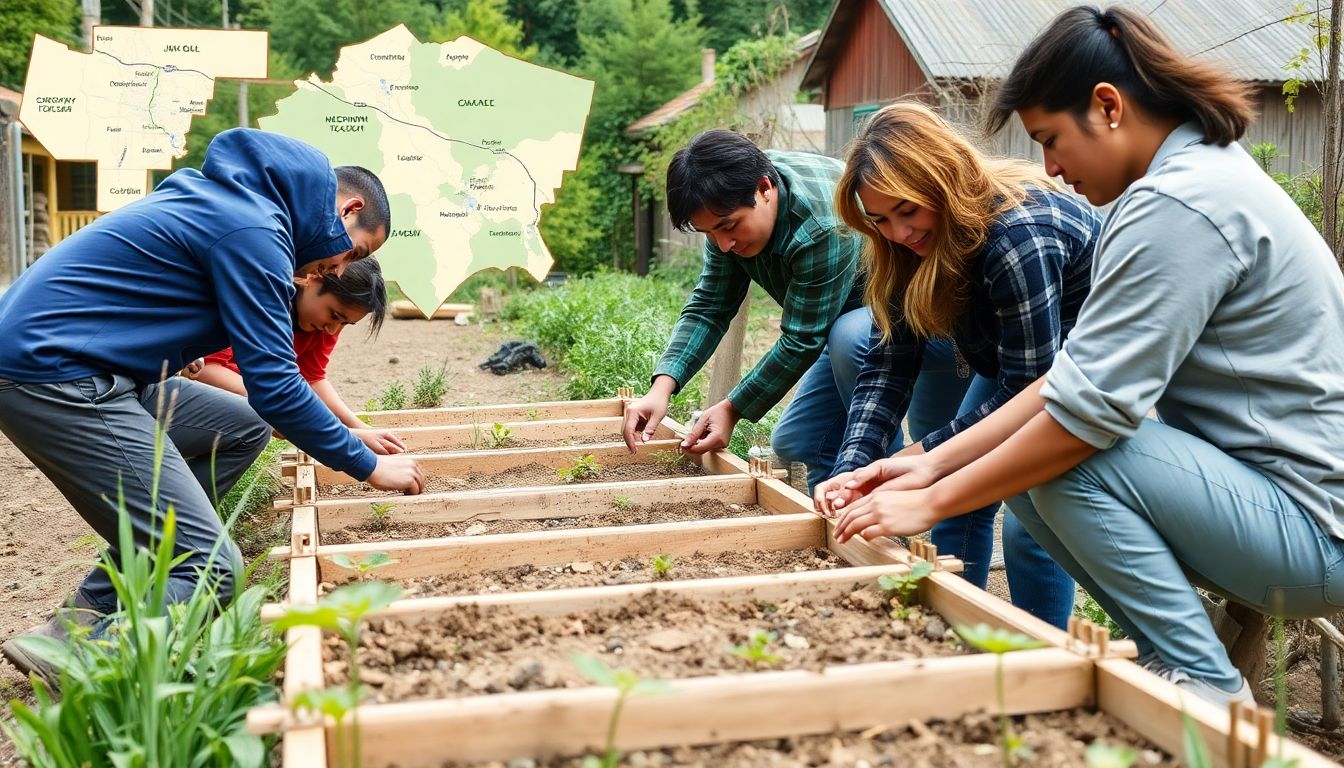
Long-Term Survival: Building a Community
In the face of a long-term grid-down scenario, the importance of building a community cannot be overstated. This isn’t just about survival, but about maintaining hope, sharing resources, and creating a support network that can weather any storm. Imagine a world where power lines are down, stores are empty, and the usual comforts of modern life are but distant memories. In such a scenario, it’s not the strongest or the most prepared who survive, but those who can work together, share their skills, and support each other’s burdens.
The first step in building such a community is finding like-minded individuals. This isn’t as simple as it sounds. In a grid-down scenario, people’s true colors come out, and not everyone is willing to work together for the common good. So, how do you find these individuals? Start by looking for people who are already prepared, who have supplies, and who understand the importance of self-sufficiency. These are the people who are most likely to see the value in community. Join local preparedness groups, attend survivalist conferences, or even just start conversations at your local hardware store. The key is to find people who share your values and your vision.
Once you’ve found these individuals, the next step is to establish a support network. This means creating a system where everyone’s skills and resources are shared equally. If one person is a doctor, they should offer their medical services to the community. If another person is a farmer, they should provide food. The key here is mutual aid
- everyone gives what they can, and everyone receives what they need. This isn’t just about survival, it’s about creating a sense of belonging and mutual responsibility.
Finally, it’s important to work together towards a common goal. This could be anything from creating a sustainable farm to building a renewable energy source. The key is to have a shared vision that everyone can work towards. This gives people a sense of purpose and helps to build morale. It also ensures that everyone is working together, rather than against each other.
Remember, building a community isn’t just about survival, it’s about creating a new way of life. It’s about finding a way to live in harmony with the world around us, rather than against it. It’s about creating a future where we can all thrive, even in the face of the most challenging circumstances.

Educating the Next Generation
In the face of a grid-down scenario, educating the next generation becomes not just an important task, but a critical one. When the world as we know it changes, the knowledge and skills we impart to our children can mean the difference between thriving and merely surviving. It’s our responsibility to cultivate resilient, self-reliant individuals who can adapt to new circumstances and contribute to their communities.
Homeschooling in such a scenario requires a shift in mindset. Traditional academics remain important, but practical skills and critical thinking take on new significance. Teach children how to grow and preserve food, how to build and repair essential structures, and how to navigate using the sun and stars. Instill in them a deep understanding of their environment, from the local flora and fauna to the weather patterns.
Resilience and self-reliance are not qualities that can be taught through lectures alone. They are cultivated through experience and practice. Encourage children to take on responsibilities, to problem-solve, and to learn from their mistakes. Let them help with tasks like cooking, first aid, and even decision-making processes. This not only equips them with essential skills but also fosters a sense of ownership and self-worth.
Storytelling is a powerful tool in this process. Share tales of historical resilience and innovation. Discuss real-life examples of people who have overcome adversity. This can inspire children and provide them with models to emulate.
Lastly, remember that education is not just about acquiring knowledge, but also about cultivating character. Teach children the importance of empathy, cooperation, and community. These values will serve them well in any scenario. After all, in a grid-down world, it’s the strength of our communities that will see us through.
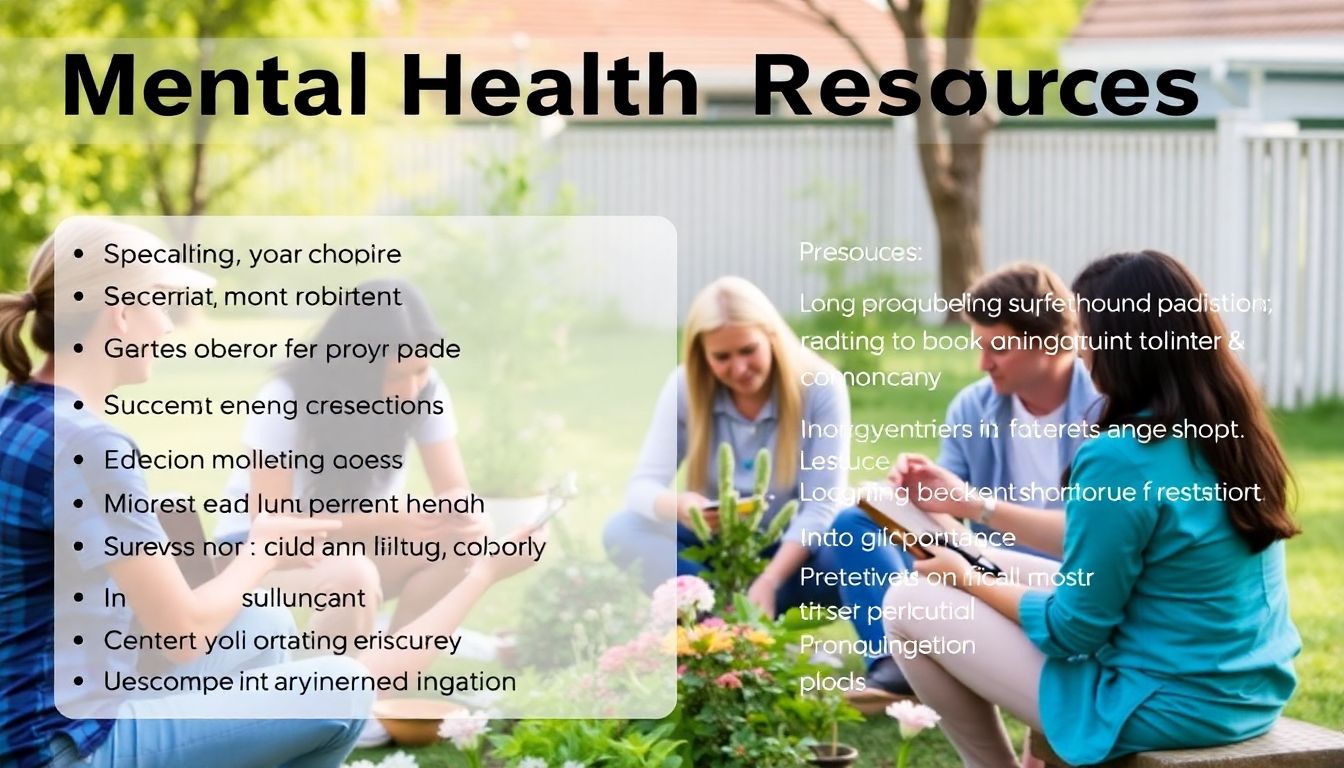
Maintaining Mental Health and Morale
In the face of a grid-down scenario, where infrastructure and services are disrupted, maintaining mental health and morale is not just a luxury, but a necessity. This is because our mental well-being directly impacts our ability to cope, make decisions, and support those around us. A positive attitude can fuel resilience, while stress and poor morale can hinder our ability to navigate challenges.
Firstly, it’s crucial to understand that it’s normal to feel stressed, anxious, or even scared in such situations. Acknowledging these feelings is the first step in managing them. Remember, it’s okay to not be okay all the time.
To maintain a positive attitude, consider the following tips:
- Stay informed but limit news consumption to avoid information overload.
- Focus on what you can control and accept what you can’t.
- Practice gratitude by acknowledging the things you’re thankful for.
- Engage in activities that bring you joy and relaxation, like reading, painting, or listening to music.
Coping with stress involves a combination of physical and mental strategies. Ensure you’re getting enough sleep, eating healthily, and exercising regularly. Mindfulness and meditation can also help manage stress and anxiety.
Supporting others in your community is equally important. Isolation can exacerbate mental health issues, so maintain social connections. Listen actively to others, offer words of encouragement, and help where you can. Remember, everyone is fighting their own battles, so kindness and empathy go a long way.
Lastly, don’t hesitate to seek professional help if you or someone else is struggling. Mental health professionals can provide strategies and tools tailored to individual needs. In a grid-down scenario, they might not be readily available, but if they are, don’t hesitate to reach out.



